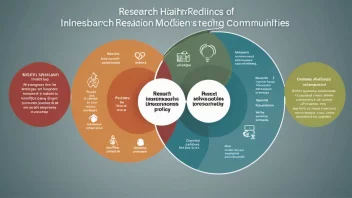Introduction
As climate change continues to intensify natural disasters around the globe, disaster response policies are undergoing significant transformations. Governments and organizations are adapting their strategies to better prepare for, respond to, and recover from the effects of climate-related events. This article highlights the top five evolving disaster response policies that reflect this shift in approach.
1. Enhanced Early Warning Systems
In an era where timely information is crucial, enhanced early warning systems are becoming a cornerstone of disaster response policies. These systems utilize advanced technology, including satellite imagery and predictive modeling, to provide accurate forecasts of impending disasters.
- Real-time Data Collection: Integrating sensors and IoT devices to gather real-time data on weather patterns.
- Community Engagement: Involving local communities in the early warning process to ensure messages are understood and acted upon.
2. Climate-Resilient Infrastructure
Investing in climate-resilient infrastructure is essential for minimizing disaster impacts. This involves designing buildings and public works that can withstand extreme weather events.
- Green Building Standards: Implementing building codes that prioritize sustainability and resilience.
- Flood Defenses: Constructing levees and flood barriers in vulnerable areas to protect communities.
3. Comprehensive Risk Assessment
A comprehensive risk assessment is crucial for understanding vulnerabilities and preparing accordingly. Policymakers are now employing data-driven approaches to identify high-risk areas and populations.
- GIS Technology: Using Geographic Information Systems to map risk zones and plan resource allocation.
- Community-Based Assessments: Engaging local populations to identify unique risks and needs.
4. Integrated Response Frameworks
Integrated response frameworks bring together multiple stakeholders, including government agencies, NGOs, and the private sector, to create a cohesive disaster response strategy.
- Cross-Sector Collaboration: Encouraging partnerships between various sectors to pool resources and expertise.
- Unified Command Structures: Establishing clear lines of communication and command during disaster events.
5. Focus on Mental Health and Community Resilience
Recognizing the psychological impact of disasters, policies are increasingly addressing mental health and community resilience. Support systems are being integrated into disaster response plans to aid recovery.
- Trauma-Informed Care: Providing mental health resources for affected individuals and families.
- Community Engagement Initiatives: Fostering local networks to enhance social support and resilience.
Conclusion
As the frequency and severity of climate-related disasters increase, the evolution of disaster response policies is more critical than ever. By focusing on enhanced early warning systems, climate-resilient infrastructure, comprehensive risk assessment, integrated response frameworks, and mental health support, policymakers can better prepare for and respond to the challenges posed by climate change. These strategies not only aim to mitigate the immediate impacts of disasters but also foster long-term resilience in communities.






